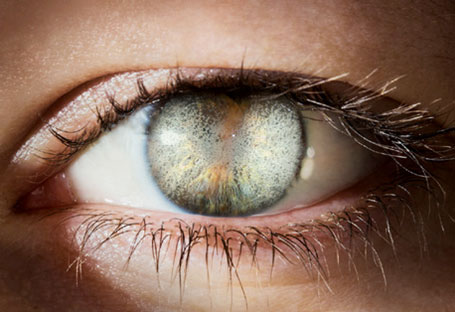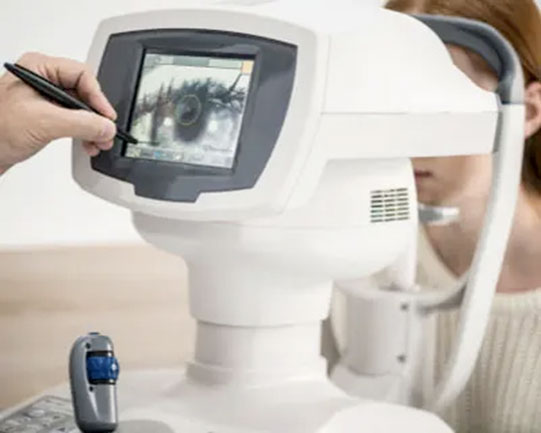
Corneal dystrophies are a group of rare, genetic eye disorders. With corneal dystrophies, abnormal material builds up in the cornea (the clear, front window of the eye). Most corneal dystrophies affect both eyes. They progress slowly and run in families.
Corneal dystrophies are caused by the build-up of material in one or more layers of the cornea. The material may cause the cornea to lose its transparency. This can cause loss of vision or blurred vision.
There are more than 20 different types of corneal dystrophies. They are generally grouped into three categories:
The symptoms of corneal dystrophy depend upon the type of corneal dystrophy. Some people experience no symptoms. In others, the build-up of material in the cornea causes it to become opaque (not clear). This leads to blurred vision or vision loss.
Many people also experience corneal erosion. This happens when the layer of cells on the surface of the cornea (the epithelium) loosens from the layer underneath (Bowman’s membrane). Corneal erosion causes:

If your ophthalmologist thinks you have a corneal dystrophy, they will examine your eye. They will also ask about your family history of eye disease.
If someone has no symptoms, a routine eye examination may show that they have corneal dystrophies. In some cases, genetic testing can identify corneal dystrophies.
Treatment for corneal dystrophies depends on:
If you do not have any symptoms, your ophthalmologist may monitor your eyes closely to see if the disorder is progressing. In other cases, eye drops, ointments or laser treatment may be appropriate.
In many cases, people with corneal dystrophy will have recurrent corneal erosion. This condition may be treated with:
If erosion continues, other treatment options may include the use of laser therapy or a technique for scraping the cornea.
In more severe cases, a corneal transplant (called keratoplasty) may be necessary. The damaged or unhealthy corneal tissue is removed and clear donor cornea tissue is put in its place. For endothelial dystrophies, such as Fuchs’ dystrophy, a partial cornea transplant (or endothelial keratoplasty) is used.